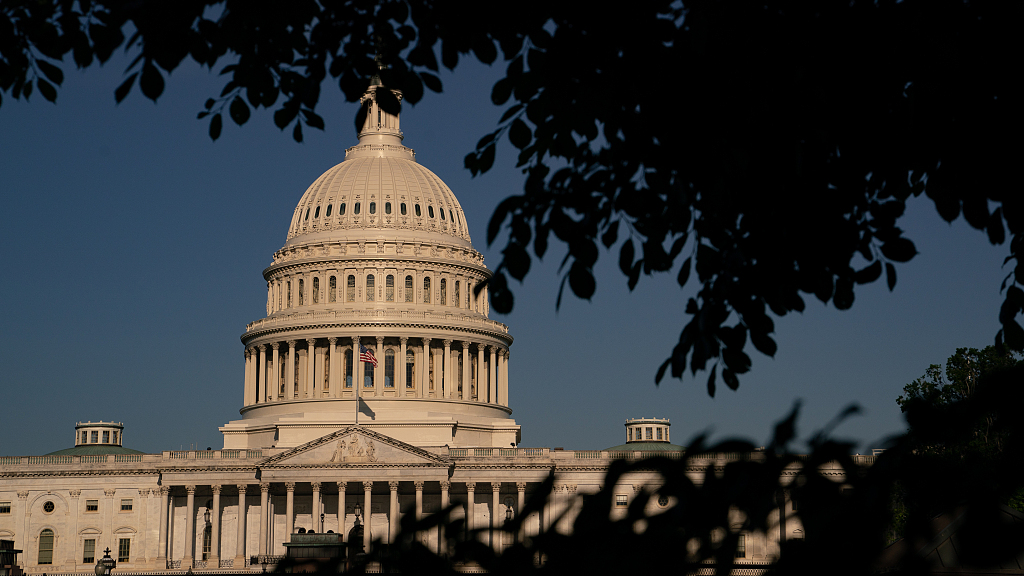
The U.S. Capitol in Washington, D.C., U.S., May 4, 2021. /CFP
The U.S. Capitol in Washington, D.C., U.S., May 4, 2021. /CFP
Editor's note: John Gong is a professor at the University of International Business and Economics and a research fellow at the Academy of China Open Economy Studies at UIBE. The article reflects the author's views and not necessarily those of CGTN.
The most authoritative and probably also the most objective assessment of the United States government's performance in the battle against the COVID-19 pandemic over the last two years has just been released by the U.S. Government Accountability Office (GAO), as mandated by one provision in the CARES Act. GAO is a legislative branch agency set up by Congress in 1921 to basically audit, evaluate and investigate how Congress-authorized funding is spent.
First is the overall picture. According to the Centers for Disease Control and Prevention (CDC), the U.S. had about 56 million reported cases of COVID-19 and over 830,000 reported deaths as of the beginning of 2022. This month, if not next month, the death toll is likely to break through the one million mark.
These are hard statistics that are impossible to dispute and debate over. But let's set aside the politically charged policy debate and look at how the U.S. federal government has fared so far in terms of helping the American public to weather through the plight.
Congress has passed six relief laws and authorized $4 trillion for the federal government as of November 30, 2021, of which $3.5 trillion has been expended so far. The GAO report identified four federal agencies that have fallen grossly short.
The first is almost $38 billion of a $46.55 billion fund appropriated for Emergency Rental Assistance (ERA) programs and dispersed by the Treasury Department, which in turn gives the money to states, local governments and other nonfederal entities to distribute the funds to the needed. The GAO report says that the Treasury has not yet designed processes to identify and recover overpayments made by grantees, such as post-payment reviews or recovery audits.

The Lincoln Memorial in Washington, D.C., U.S., May 4, 2021. /CFP
The Lincoln Memorial in Washington, D.C., U.S., May 4, 2021. /CFP
But that is small money by GAO standards. Next in line is the Food and Nutrition Service (FNS) under the Department of Agriculture, which administers several federal nutrition assistance programs dedicated to helping children attending schools closed due to COVID-19. Altogether about $74 billion has been spent. The GOA's assessment is that "FNS does not have a comprehensive strategy for how its nutrition assistance programs should respond during emergencies."
Next is the Internal Revenue Service (IRS), which is required by the CARES Act and other COVID-19 relief laws to provide temporary tax reliefs to businesses. The GAO's criticism is mostly related to the IRS's longer processing time for tax refund requests, which should be within 90 days as per the CARES Act but turns out to be 165 days on average.
The GAO's most severe criticism of the federal government is preserved for the Department of Health & Human Services (HHS), which received $484 billion in COVID-19 relief appropriations but only spent $226 billion in reality. The GAO said, "For more than a decade, GAO has reported on HHS's execution of its lead role in preparing for, and responding to, a range of public health emergencies and has found persistent deficiencies in its ability to perform this role." Essentially, the GAO is questioning the HHS's entire current and past leadership.
With the calamity of the criticisms lodged against these federal agencies mentioned by the GAO report, one has to wonder how much of it is related to the nearly one million death toll in the United States. Granted, the bulk of the ineptitude happened under the former Donald Trump administration, which is hardly surprising, but some of it also happened under the Joe Biden administration.
But here is a larger institutional problem regarding the question of to what extent the role of political appointees at these federal agencies and the associated gridlock politics spilled over from Congress hamper the bureaucratic stability and effectiveness at these agencies in implementing government policies. That is a more entrenched problem that is more difficult for the GAO to address.
(If you want to contribute and have specific expertise, please contact us at opinions@cgtn.com.)

